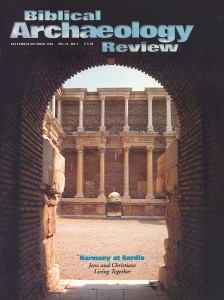What the Law Says
Sidebar to: Death Knell for Israel Archaeology?
The longstanding compromise between archaeology and faith, hammered out in the 1950s, is now defunct
For decades, archaeological excavations in Israel have conformed to a compromise worked out in the 1950s between the Ministry of Religious Affairs and the Ministry of Education and Culture, which oversees the Israel Antiquities Authority (IAA). These bodies agreed that the excavation of human remains is different from other kinds of excavations: Archaeologists must show proper “respect … in handling the bones of corpses,” and human bones must “be forwarded, after their examination, to the Ministry for Religious Affairs for burial” (July 22, 1994, directive of Israeli attorney general Michael Ben-Yair; italics added).
Recent clashes between archaeology and faith—leading to massive demonstrations, government intervention and the bafflement of the police—have put this practical compromise in jeopardy. This round of hostilities began with the excavation at French Hill in Jerusalem in late 1992. Jewish burial caves from the Second Temple period were uncovered during a highway construction project, and the IAA conducted a rescue excavation from September to December. After intense protests by ultra-Orthodox groups, the IAA’s right to excavate ancient tombs was brought before the Supreme Court.
In its brief, the IAA argued that the French Hill excavations had been conducted in strict accordance with the longstanding procedure set up in the 1950s. The Supreme Court agreed, explicitly upholding the earlier compromise:
Already a library member? Log in here.
Institution user? Log in with your IP address.

